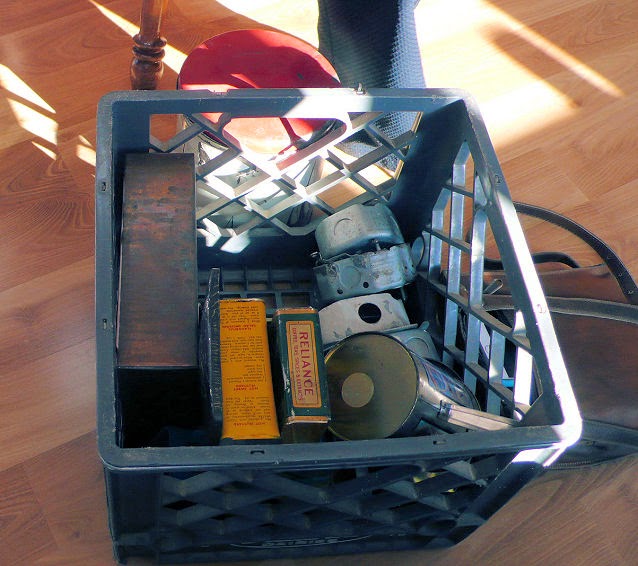 |
| Under consideration for rendering grass & reeds |
I stopped by an artist friend's house the other day, Adrift in tow. I'd offered to let her try out some fabric markers I had on hand and she'd offered to let me raid her stash of decorative threads and yarns. She'd seen my last blog post on Adrift so knew where I was at in the questioning department. But nothing takes the place of seeing something in person, especially when in need of an opinion and perhaps an idea or two. I had questions about my perspective reference elements beyond "do you have better yarns than I do to represent grass" and could best talk about them with the quilt in front of us. I left still not sure exactly how I will treat these areas, but as I had hoped, my mind got a little unstuck and I got some good feedback. As my friend said, sometimes it just helps to talk these things through out loud, regardless of whether you come to specific conclusions.
In the course of this discussion about my quilt, we talked a bit about difference in designing styles. In this case, the design inspiration started with that shibori fabric; it's often a piece of fabric that sparks ideas for me. I remembered those unused leaves in a bin and thought aha! Perfect for making this idea of the water shibori complete. But of course, it was not complete and I didn't know what to add. Much later, I came across the hand-dye and thought aha! Add that to the top and the design is complete. But once I started quilting, I realized it was not complete, it needed more. And that is where I'm at right now. I realize that if I finished it up with no more additions or fiddling, many people would say how wonderful and beautiful it is. But I would know it needs more.
And so in this talking it through, I discovered a bit more about myself and my way of designing and looking at other quilts. I realized that I very often go through three stages:
- Most people think it's wonderful just the way it is. Perhaps it IS wonderful on some level, but I know it is not truly wonderful.
- I think and think and mull and study and suddenly, aha! I'm onto something and I start moving forward on the work. Again, I find many people would find it wonderful at this stage too, but I'm still bugged by something. I know it is not as wonderful as it could be.
- I finally have that breakthrough moment, where the "I'm on to something" becomes "I know what that something is" and I can/do make it happen. Now the quilt is truly wonderful, something special, and I am happy.
Believe me, every quilt I finish does not achieve the third stage status, try as I might. Some concepts start out well but are beyond what I can figure out, or I'm under time constraints that don't allow me to continue pursuing the "onto something" until I fully realize it. That's part of the learning curve, like it or not (and often I do not!). Adrift is at that I'm on to something stage and I'm having a difficult time grabbing on to what that something is! But I sense I am close.
As if to confirm this insight and make me feel better about my plight, the very next day I ran across a similar thought voiced by painter Nicholas Raynold in an interview with The Artist's Magazine. Among the fundamental principles that he feels will help students when they run into trouble while developing their pictures, he includes letting the painting evolve.
"The construction of a painting evolves, in the same way our understanding of seeing deepens as we become more familiar with a subject; the picture advances from crude to refined, from dull to brilliant, from simple to complex."
A part of that evolution I would say is another of his principles: thinking through problems.
"If you feel that something isn't right, don't just hack away at it. Stand back, think it through and try to resolve whatever it is."
Also pertinent to my discussion with my friend, where I admitted that I felt the need to look at pictures of grasses to be reminded how they bend and entwine, the principle of trusting eyes over memory.
"Don't trust that you'll remember the intricacies of a line or brushstroke."
And you should not be surprised that I like that he stresses the benefits of slowing down in the last section titled "Slow is Good", favoring accuracy over speed and the importance of solid observational skills.
"Always be attentive to what you're doing..."
Some of the advice in this article (May 2014 issue) is geared to students participating in a workshop situation as is this next quotation. Still, I think it a good one to take home to the studio.
"Everyone is at a different place in his or her painting career. Each has a different set of problems to resolve. Workshops last a limited time, so if you grasp just one sliver of illumination that moves the struggle forward - then you've achieved success."


















